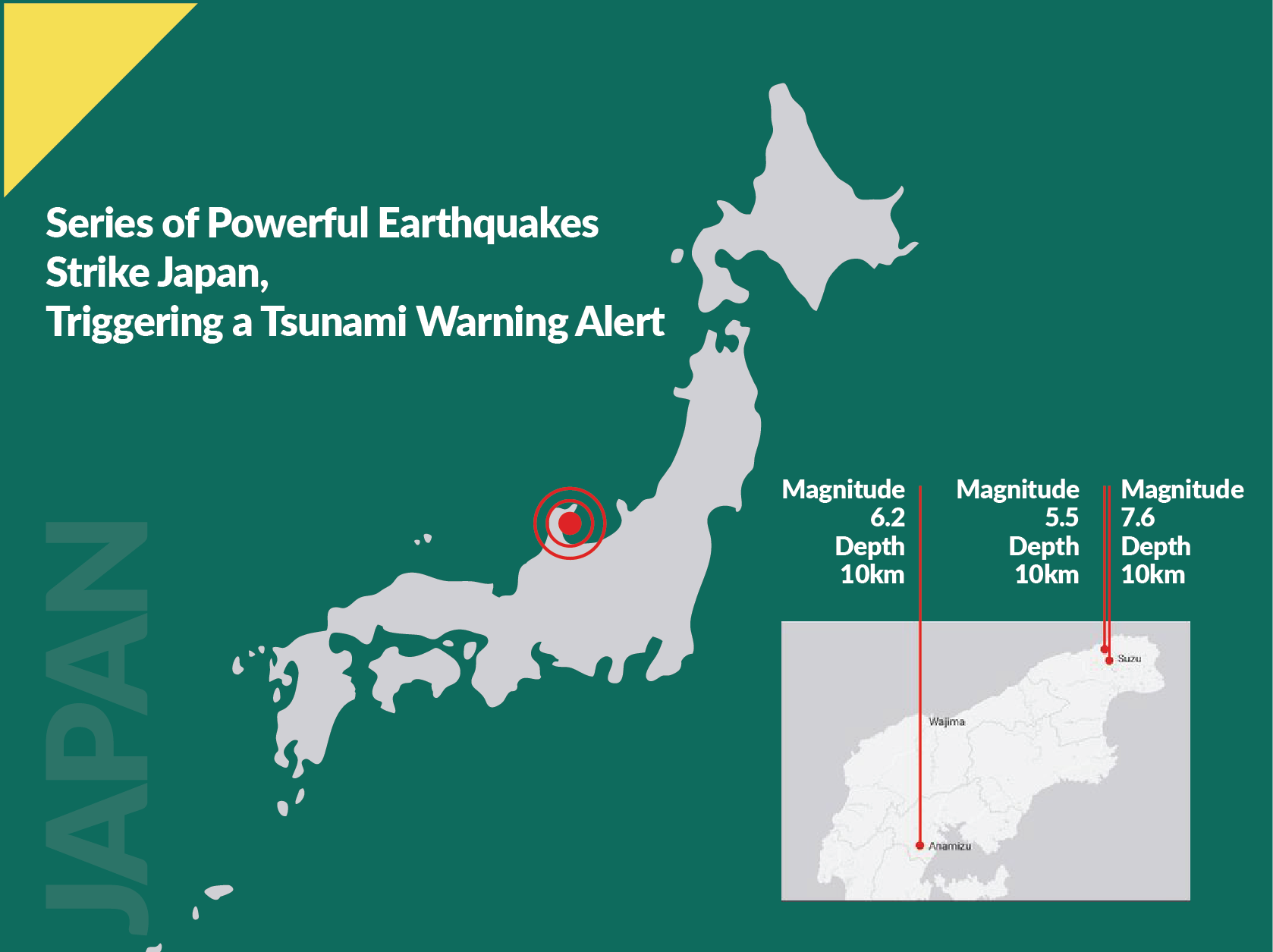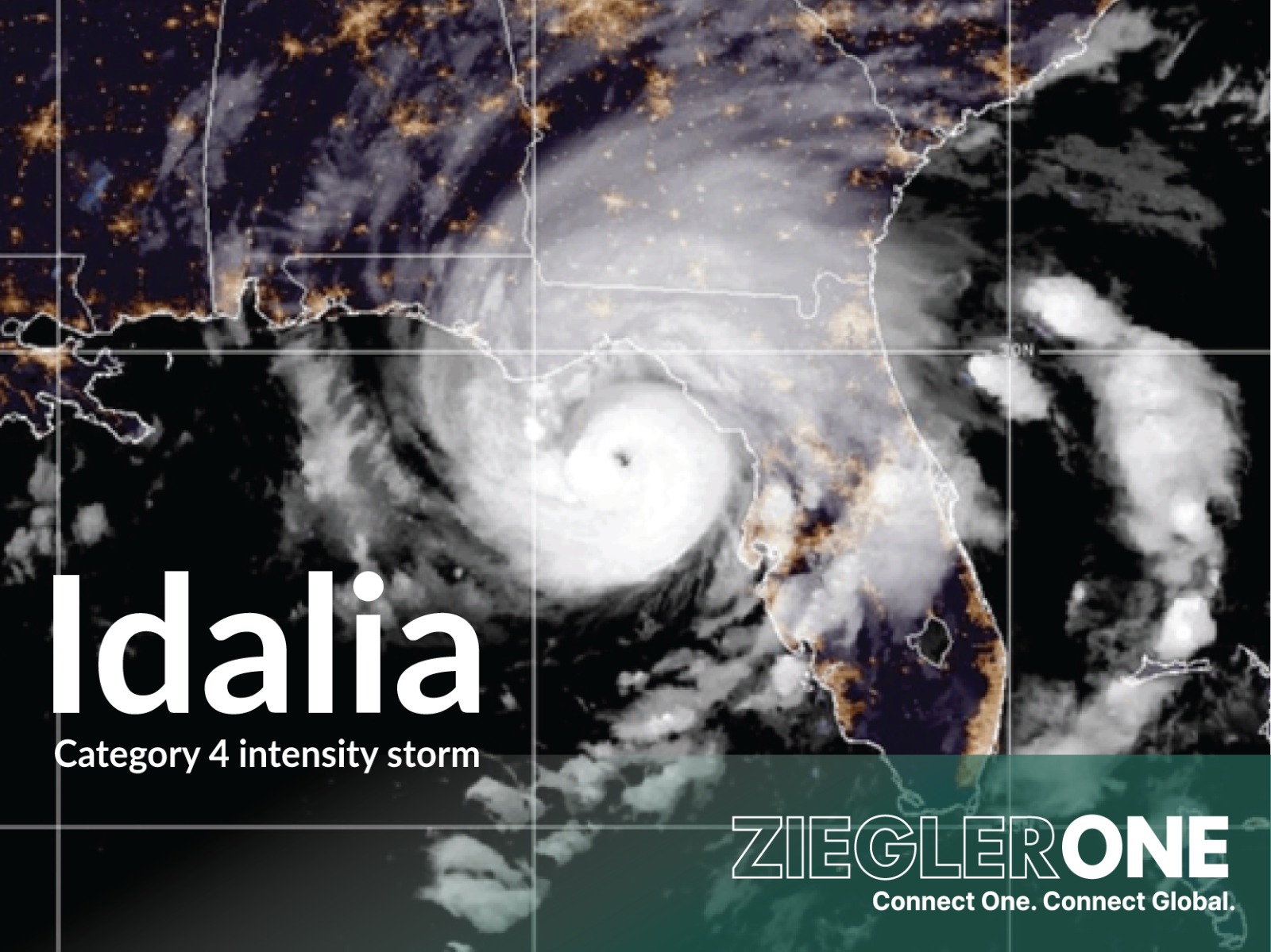Hurricane Idalia - Florida
Hurricane Idalia gained fury on Tuesday as it crawled toward Florida'sGulf Coast, forcing mass evacuations in low-lying areas expected to be swamped...

1 January 2024:
At the Ziegler One desk we kept an eye on the developments of the earthquake in Japan with a magnitude 7.6 that struck in Ishikawa prefecture in central Japan on Monday afternoon 1 January 2024, triggering tsunami warnings for regions along the western coast.
2 January 2024 update:
3 January 2024 update:
8 January 2024 update:
Japan - Earthquake intensity scale:
The shindo scale, a distinctive seismic measurement system employed by the Japan Meteorological Agency, gauges the intensity of tremors during an earthquake. Unlike the earthquake magnitude, which quantifies the seismic energy at its source, the shindo scale uses numbers ranging from 0 to 7. As the assigned number increases, so does the magnitude of shaking and its effects. Shindo levels 5 and 6 are further divided into lower and upper tiers.
At the maximum level of 7, individuals may find it impossible to remain standing, potentially being thrown into the air. Unsecured furniture is prone to toppling over or being launched, and reinforced concrete walls may collapse. At the upper intensity of level 5, mobility becomes challenging for people, and dishes may fall from cupboards. In the lower tier of level 5, hanging objects may swing violently. Level 4, as defined by the agency, is noticeable to most individuals, even those in motion, and has the potential to awaken sleeping individuals. This level also causes significant swinging of hanging objects. Level 3, felt by most people at rest, can make plates in cupboards rattle.
|
Locations with a seismic intensity of Shindo 5- and higher |
||
|
Intensity |
Prefecture |
Location |
|
7 |
Ishikawa |
Shika |
|
6+ |
Ishikawa |
Nanao, Wajima, Suzu, Anamizu |
|
6- |
Ishikawa |
Nakanoto, Noto |
|
Niigata |
Nagaoka |
|
|
5+ |
Ishikawa |
Hakui, Hōdatsushimizu, Kanazawa, Komatsu, Kaga, Kahoku, Nomi |
|
Niigata |
Sanjō, Kashiwazaki, Mitsuke, Minamiuonuma, Kariwa, Itoigawa, Myōkō, Jōetsu, Chūō-ku, Minami-ku, Nishi-ku, Nishikan-ku, Tsubame, Aga, Sado |
|
|
Toyama |
Toyama, Funahashi, Takaoka, Himi, Oyabe, Nanto, Imizu |
|
|
Fukui |
Awara |
|
|
5- |
Ishikawa |
Hakusan, Tsubata, Uchinada |
|
Niigata |
Ojiya, Kamo, Tōkamachi, Izumozaki, Kita-ku, Higashi-ku, Kōnan-ku, Akiha-ku, Gosen, Agano |
|
|
Toyama |
Namerikawa, Kurobe, Kamiichi, Tateyama, Asahi, Tonami |
|
|
Fukui |
Fukui, Sakai |
|
|
Nagano |
Nagano, Shinano, Sakae |
|
|
Gifu |
Takayama, Hida |
|

Hurricane Idalia gained fury on Tuesday as it crawled toward Florida'sGulf Coast, forcing mass evacuations in low-lying areas expected to be swamped...

On 10 January 2024, Air Cargo News announced that Singapore Airlines (SIA) has successfully undergone IATA recertification for its handling of...

Red Sea Update